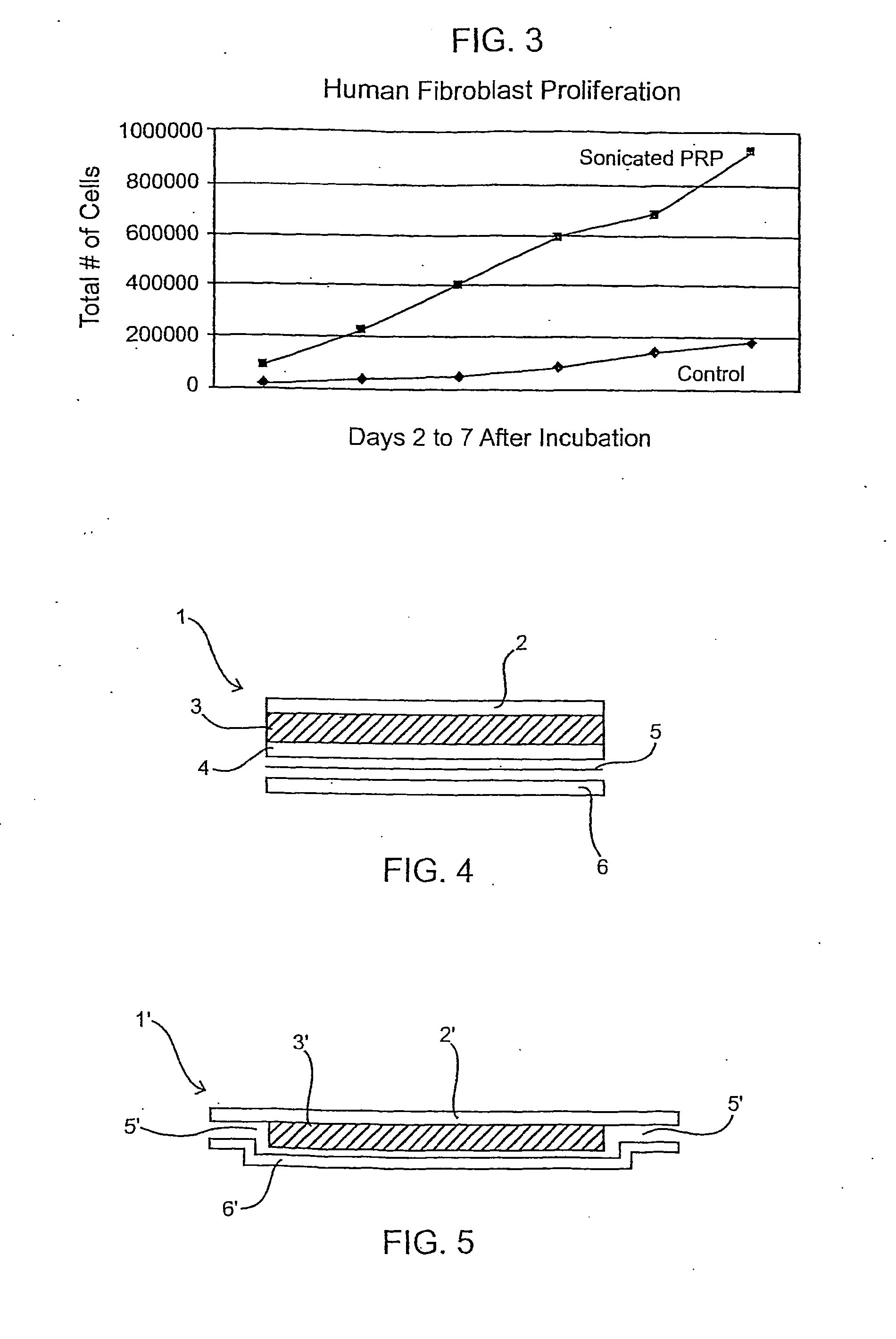Compositions and method for decreasing the appearance of skin wrinkles
a technology of wrinkles and compositions, applied in the field of dermatology, can solve the problems of uneven pigmentation, accelerated pigmentation, and accelerated pigmentation, and achieve the effects of prolonging the storage time of unactivated platelets, prolonging the survival time of transfused platelets, and reducing the appearance of wrinkles
- Summary
- Abstract
- Description
- Claims
- Application Information
AI Technical Summary
Benefits of technology
Problems solved by technology
Method used
Image
Examples
example a
[0129]
1) platelet releasate2.20%2) Solubilizing agent4.00%3) Acrylic resin29.00% 4) Fatty acid 13.20%5) Fatty acid 21.60%6) Pressure-sensitive adhesive60.0%
example b
[0130]
1) PRP4.99%2) EDTA0.025% 3) Solubilizing agent9.96%4) Fatty acid 17.96%5) Fatty acid 23.97%6) Acrylic resin1.99%7) Cellulose derivative0.25%8) Surfactant20.4%9) Pressure-sensitive adhesive50.455%
Patch Devoid of Drug
[0131]There are a wide range of transdermal patches known in the art and, in general, those patches can be modified to incorporate a platelet releasate formulation of the invention. However, in an embodiment of the invention the platelet releasate is autologous to the patient being treated. To achieve such the patch can be produced without a drug (e.g. without platelet releasate) in it. The patch may have a single or multiple compartments which can be filled with the patient's own platelet releasate prior to placing the patch on the patient's skin. This can be accomplished in a number of different ways. For example, the patch may comprise a compartment which is empty or comprises a gauze, matrix or like material which readily absorbs a liquid such as releasate form...
example 1
[0138]PRP was prepared using a centrifuge unit made by Harvest (Plymouth, Mass.). (Similar units are available as The Biomet GPS system, the Depuy Symphony machine and the Medtronic Magellan machine.) Approximately 55 cc of blood was drawn from the patient using a standard sterile syringe, combined with 5 cc of a citrate dextrose solution for anticoagulation, and then spun down to isolate the platelets according to the manufacturer's protocol. These platelets were then resuspended in approximately 3 cc of plasma. The resulting platelet rich plasma solution (PRP) was quite acidic and was neutralized with using approximately 0.05 cc of an 8.4% sodium bicarbonate buffer per cc of PRP under sterile conditions to approximately physiologic pH of 7.4. The PRP was not activated through addition of exogenous activators. This PRP composition is referred to herein as autologous platelet extract (APEX).
PUM
| Property | Measurement | Unit |
|---|---|---|
| pH | aaaaa | aaaaa |
| constant DC current | aaaaa | aaaaa |
| mean diameter | aaaaa | aaaaa |
Abstract
Description
Claims
Application Information
 Login to View More
Login to View More - R&D
- Intellectual Property
- Life Sciences
- Materials
- Tech Scout
- Unparalleled Data Quality
- Higher Quality Content
- 60% Fewer Hallucinations
Browse by: Latest US Patents, China's latest patents, Technical Efficacy Thesaurus, Application Domain, Technology Topic, Popular Technical Reports.
© 2025 PatSnap. All rights reserved.Legal|Privacy policy|Modern Slavery Act Transparency Statement|Sitemap|About US| Contact US: help@patsnap.com



